Mybatis学习笔记二
目录
- 一、MyBatis的各种查询功能
- 1.1 查询一个实体类对象
- 1.2 查询一个List集合
- 1.3 查询单个数据
- 1.4 查询一条数据为map集合
- 1.5 查询多条数据为map集合
- 1.5.1 方法一:
- 1.5.2 方法二:
- 二、特殊SQL的执行
- 2.1 模糊查询
- 2.2 批量删除
- 2.3 动态设置表名
- 2.4 添加功能获取自增的主键
- 三、自定义映射resultMap
- 3.1 多对一映射处理
- 3.2 一对多映射处理
- 3.3 延迟加载
- 四、动态SQL
- 4.1 if
- 4.2 where
- 4.3 trim
- 4.4 choose、when、otherwise
- 4.5 foreach
- 4.6 SQL片段
一、MyBatis的各种查询功能
- 如果查询出的数据只有一条,可以通过
- 实体类对象接收
- List集合接收
- Map集合接收,结果{password=123456, sex=男, id=1, age=23, username=admin}
- 如果查询出的数据有多条,一定不能用实体类对象接收,会抛异常TooManyResultsException,可以通过
- 实体类类型的LIst集合接收
- Map类型的LIst集合接收
- 在mapper接口的方法上添加@MapKey注解
1.1 查询一个实体类对象
/**
* 根据用户id查询用户信息
* @param id
* @return
*/
User getUserById(@Param("id") int id);
<!--User getUserById(@Param("id") int id);-->
<select id="getUserById" resultType="User">select * from t_user where id = #{id}
</select>
1.2 查询一个List集合
/*** 查询所有用户信息* @return*/
List<User> getUserList();
<!--List<User> getUserList();-->
<select id="getUserList" resultType="User">select * from t_user
</select>
1.3 查询单个数据
/** * 查询用户的总记录数 * @return * 在MyBatis中,对于Java中常用的类型都设置了类型别名 * 例如:java.lang.Integer-->int|integer * 例如:int-->_int|_integer * 例如:Map-->map,List-->list */
int getCount();
<!--int getCount();-->
<select id="getCount" resultType="_integer">select count(id) from t_user
</select>
1.4 查询一条数据为map集合
/** * 根据用户id查询用户信息为map集合 * @param id * @return */
Map<String, Object> getUserToMap(@Param("id") int id);
<!--Map<String, Object> getUserToMap(@Param("id") int id);-->
<select id="getUserToMap" resultType="map">select * from t_user where id = #{id}
</select>
<!--结果:{password=123456, sex=男, id=1, age=23, username=admin}-->
1.5 查询多条数据为map集合
1.5.1 方法一:
/** * 查询所有用户信息为map集合 * @return * 将表中的数据以map集合的方式查询,一条数据对应一个map;若有多条数据,就会产生多个map集合,此时可以将这些map放在一个list集合中获取 */
List<Map<String, Object>> getAllUserToMap();
<!--Map<String, Object> getAllUserToMap();-->
<select id="getAllUserToMap" resultType="map"> select * from t_user
</select>
<!--结果:[{password=123456, sex=男, id=1, age=23, username=admin},{password=123456, sex=男, id=2, age=23, username=张三},{password=123456, sex=男, id=3, age=23, username=张三}]
-->
1.5.2 方法二:
/*** 查询所有用户信息为map集合* @return* 将表中的数据以map集合的方式查询,一条数据对应一个map;若有多条数据,就会产生多个map集合,并且最终要以一个map的方式返回数据,此时需要通过@MapKey注解设置map集合的键,值是每条数据所对应的map集合*/
@MapKey("id")
Map<String, Object> getAllUserToMap();
<!--Map<String, Object> getAllUserToMap();-->
<select id="getAllUserToMap" resultType="map">select * from t_user
</select>
<!--结果:{1={password=123456, sex=男, id=1, age=23, username=admin},2={password=123456, sex=男, id=2, age=23, username=张三},3={password=123456, sex=男, id=3, age=23, username=张三}}
-->
二、特殊SQL的执行
2.1 模糊查询
/*** 根据用户名进行模糊查询* @param username * @date 2022/2/26 21:56*/
List<User> getUserByLike(@Param("username") String username);
<!--List<User> getUserByLike(@Param("username") String username);-->
<select id="getUserByLike" resultType="User"><!--select * from t_user where username like '%${mohu}%'--> <!--select * from t_user where username like concat('%',#{mohu},'%')--> select * from t_user where username like "%"#{mohu}"%"
</select>
其中select * from t_user where username like “%”#{mohu}"%"是最常用的
2.2 批量删除
只能使用${},如果使用#{},则解析后的sql语句为delete from t_user where id in (‘1,2,3’),这样是将1,2,3看做是一个整体,只有id为1,2,3的数据会被删除。正确的语句应该是delete from t_user where id in (1,2,3),或者delete from t_user where id in (‘1’,‘2’,‘3’)
/*** 根据id批量删除* @param ids * @return int* @date 2022/2/26 22:06*/
int deleteMore(@Param("ids") String ids);
<delete id="deleteMore">delete from t_user where id in (${ids})
</delete>
//测试类
@Test
public void deleteMore() {SqlSession sqlSession = SqlSessionUtils.getSqlSession();SQLMapper mapper = sqlSession.getMapper(SQLMapper.class);int result = mapper.deleteMore("1,2,3,8");System.out.println(result);
}
2.3 动态设置表名
- 只能使用${},因为表名不能加单引号
/*** 查询指定表中的数据* @param tableName */
List<User> getUserByTable(@Param("tableName") String tableName);
<!--List<User> getUserByTable(@Param("tableName") String tableName);-->
<select id="getUserByTable" resultType="User">select * from ${tableName}
</select>
2.4 添加功能获取自增的主键
- 使用场景
- t_clazz(clazz_id,clazz_name)
- t_student(student_id,student_name,clazz_id)
- 添加班级信息
- 获取新添加的班级的id
- 为班级分配学生,即将某学生班级id修改为新添加的班级的id
- 在mapper.xml中设置两个属性
- useGeneratedKeys:设置使用自增的主键
- keyProperty:因为增删改有统一的返回值是受影响的行数,因此只能将获取的自增的主键放在传输的参数user对象的某个属性中,指定实体类中的哪个变量接收自增id
/*** 添加用户信息* @param user * @date 2022/2/27 15:04*/
void insertUser(User user);
<!--void insertUser(User user);-->
<insert id="insertUser" useGeneratedKeys="true" keyProperty="id">insert into t_user values (null,#{username},#{password},#{age},#{sex},#{email})
</insert>
//测试类
@Test
public void insertUser() {SqlSession sqlSession = SqlSessionUtils.getSqlSession();SQLMapper mapper = sqlSession.getMapper(SQLMapper.class);User user = new User(null, "ton", "123", 23, "男", "123@321.com");mapper.insertUser(user);System.out.println(user);//输出:user{id=10, username='ton', password='123', age=23, sex='男', email='123@321.com'},自增主键存放到了user的id属性中
}
三、自定义映射resultMap
resultMap处理字段和属性的映射关系
- resultMap:设置自定义映射
- 属性:
- id:表示自定义映射的唯一标识,不能重复
- type:查询的数据要映射的实体类的类型
- 子标签:
- id:设置主键的映射关系
- result:设置普通字段的映射关系
- 子标签属性:
- property:设置映射关系中实体类中的属性名
- column:设置映射关系中表中的字段名
- 属性:
- 若字段名和实体类中的属性名不一致,则可以通过resultMap设置自定义映射,即使字段名和属性名一致的属性也要映射,也就是全部属性都要列出来
<resultMap id="empResultMap" type="Emp"><id property="eid" column="eid"></id><result property="empName" column="emp_name"></result><result property="age" column="age"></result><result property="sex" column="sex"></result><result property="email" column="email"></result>
</resultMap>
<!--List<Emp> getAllEmp();-->
<select id="getAllEmp" resultMap="empResultMap">select * from t_emp
</select>
若字段名和实体类中的属性名不一致,但是字段名符合数据库的规则(使用_),实体类中的属性名符合Java的规则(使用驼峰)。此时也可通过以下两种方式处理字段名和实体类中的属性的映射关系 .
- 可以通过为字段起别名的方式,保证和实体类中的属性名保持一致
<!--List<Emp> getAllEmp();-->
<select id="getAllEmp" resultType="Emp">select eid,emp_name empName,age,sex,email from t_emp
</select>
- 可以在MyBatis的核心配置文件中的setting标签中,设置一个全局配置信息mapUnderscoreToCamelCase,可以在查询表中数据时,自动将_类型的字段名转换为驼峰,例如:字段名user_name,设置了mapUnderscoreToCamelCase,此时字段名就会转换为userName。
<settings><setting name="mapUnderscoreToCamelCase" value="true"/>
</settings>
3.1 多对一映射处理
查询员工信息以及员工所对应的部门信息
public class Emp { private Integer eid; private String empName; private Integer age; private String sex; private String email; private Dept dept;//...构造器、get、set方法等
}
第一种方法:级联方式处理映射关系
<resultMap id="empAndDeptResultMapOne" type="Emp"><id property="eid" column="eid"></id><result property="empName" column="emp_name"></result><result property="age" column="age"></result><result property="sex" column="sex"></result><result property="email" column="email"></result><result property="dept.did" column="did"></result><result property="dept.deptName" column="dept_name"></result>
</resultMap>
<!--Emp getEmpAndDept(@Param("eid")Integer eid);-->
<select id="getEmpAndDept" resultMap="empAndDeptResultMapOne">select * from t_emp left join t_dept on t_emp.eid = t_dept.did where t_emp.eid = #{eid}
</select>
第二种方法:使用association处理映射关系
- association:处理多对一的映射关系
- property:需要处理多对的映射关系的属性名
- javaType:该属性的类型
<resultMap id="empAndDeptResultMapTwo" type="Emp"><id property="eid" column="eid"></id><result property="empName" column="emp_name"></result><result property="age" column="age"></result><result property="sex" column="sex"></result><result property="email" column="email"></result><association property="dept" javaType="Dept"><id property="did" column="did"></id><result property="deptName" column="dept_name"></result></association>
</resultMap>
<!--Emp getEmpAndDept(@Param("eid")Integer eid);-->
<select id="getEmpAndDept" resultMap="empAndDeptResultMapTwo">select * from t_emp left join t_dept on t_emp.eid = t_dept.did where t_emp.eid = #{eid}
</select>
第三种方法:分步查询
- 查询员工信息
select:设置分布查询的sql的唯一标识(namespace.SQLId或mapper接口的全类名.方法名)
column:设置分步查询的条件
//EmpMapper里的方法
/*** 通过分步查询,员工及所对应的部门信息* 分步查询第一步:查询员工信息* @param */
Emp getEmpAndDeptByStepOne(@Param("eid") Integer eid);
<resultMap id="empAndDeptByStepResultMap" type="Emp"><id property="eid" column="eid"></id><result property="empName" column="emp_name"></result><result property="age" column="age"></result><result property="sex" column="sex"></result><result property="email" column="email"></result><association property="dept"select="com.lx.mybatis.mapper.DeptMapper.getEmpAndDeptByStepTwo"column="did"></association>
</resultMap>
<!--Emp getEmpAndDeptByStepOne(@Param("eid") Integer eid);-->
<select id="getEmpAndDeptByStepOne" resultMap="empAndDeptByStepResultMap">select * from t_emp where eid = #{eid}
</select>
2.查询部门信息
//DeptMapper里的方法
/*** 通过分步查询,员工及所对应的部门信息* 分步查询第二步:通过did查询员工对应的部门信息* @param*/
Dept getEmpAndDeptByStepTwo(@Param("did") Integer did);
<!--此处的resultMap仅是处理字段和属性的映射关系-->
<resultMap id="EmpAndDeptByStepTwoResultMap" type="Dept"><id property="did" column="did"></id><result property="deptName" column="dept_name"></result>
</resultMap>
<!--Dept getEmpAndDeptByStepTwo(@Param("did") Integer did);-->
<select id="getEmpAndDeptByStepTwo" resultMap="EmpAndDeptByStepTwoResultMap">select * from t_dept where did = #{did}
</select>
3.2 一对多映射处理
public class Dept {private Integer did;private String deptName;private List<Emp> emps;//...构造器、get、set方法等
}java
collection
- collection:用来处理一对多的映射关系
- ofType:表示该属性对应的集合中存储的数据的类型
<resultMap id="DeptAndEmpResultMap" type="Dept"><id property="did" column="did"></id><result property="deptName" column="dept_name"></result><collection property="emps" ofType="Emp"><id property="eid" column="eid"></id><result property="empName" column="emp_name"></result><result property="age" column="age"></result><result property="sex" column="sex"></result><result property="email" column="email"></result></collection>
</resultMap>
<!--Dept getDeptAndEmp(@Param("did") Integer did);-->
<select id="getDeptAndEmp" resultMap="DeptAndEmpResultMap">select * from t_dept left join t_emp on t_dept.did = t_emp.did where t_dept.did = #{did}
</select>
分步查询
1.查询部门信息
/*** 通过分步查询,查询部门及对应的所有员工信息* 分步查询第一步:查询部门信息* @param did */
Dept getDeptAndEmpByStepOne(@Param("did") Integer did);
<resultMap id="DeptAndEmpByStepOneResultMap" type="Dept"><id property="did" column="did"></id><result property="deptName" column="dept_name"></result><collection property="emps"select="com.lx.mybatis.mapper.EmpMapper.getDeptAndEmpByStepTwo"column="did"></collection>
</resultMap>
<!--Dept getDeptAndEmpByStepOne(@Param("did") Integer did);-->
<select id="getDeptAndEmpByStepOne" resultMap="DeptAndEmpByStepOneResultMap">select * from t_dept where did = #{did}
</select>
2.根据部门id查询部门中的所有员工
/*** 通过分步查询,查询部门及对应的所有员工信息* 分步查询第二步:根据部门id查询部门中的所有员工* @param did*/
List<Emp> getDeptAndEmpByStepTwo(@Param("did") Integer did);
<!--List<Emp> getDeptAndEmpByStepTwo(@Param("did") Integer did);-->
<select id="getDeptAndEmpByStepTwo" resultType="Emp">select * from t_emp where did = #{did}
</select>
3.3 延迟加载
- 分步查询的优点:可以实现延迟加载,但是必须在核心配置文件中设置全局配置信息:
- lazyLoadingEnabled:延迟加载的全局开关。当开启时,所有关联对象都会延迟加载
- aggressiveLazyLoading:当开启时,任何方法的调用都会加载该对象的所有属性。 否则,每个属性会按需加载
- 此时就可以实现按需加载,获取的数据是什么,就只会执行相应的sql。此时可通过association和collection中的fetchType属性设置当前的分步查询是否使用延迟加载,fetchType=“lazy(延迟加载)|eager(立即加载)”
<settings><!--开启延迟加载--><setting name="lazyLoadingEnabled" value="true"/>
</settings>
@Test
public void getEmpAndDeptByStepOne() {SqlSession sqlSession = SqlSessionUtils.getSqlSession();EmpMapper mapper = sqlSession.getMapper(EmpMapper.class);Emp emp = mapper.getEmpAndDeptByStepOne(1);System.out.println(emp.getEmpName());
}
- 关闭延迟加载,两条SQL语句都运行了

- 开启延迟加载,只运行获取emp的SQL语句

- fetchType:当开启了全局的延迟加载之后,可以通过该属性手动控制延迟加载的效果,fetchType=“lazy(延迟加载)|eager(立即加载)”
<resultMap id="empAndDeptByStepResultMap" type="Emp"><id property="eid" column="eid"></id><result property="empName" column="emp_name"></result><result property="age" column="age"></result><result property="sex" column="sex"></result><result property="email" column="email"></result><association property="dept"select="com.atguigu.mybatis.mapper.DeptMapper.getEmpAndDeptByStepTwo"column="did"fetchType="lazy"></association>
</resultMap>
四、动态SQL
Mybatis框架的动态SQL技术是一种根据特定条件动态拼装SQL语句的功能,它存在的意义是为了解决拼接SQL语句字符串时的痛点问题
4.1 if
- if标签可通过test属性(即传递过来的数据)的表达式进行判断,若表达式的结果为true,则标签中的内容会执行;反之标签中的内容不会执行
- 在where后面添加一个恒成立条件1=1
- 这个恒成立条件并不会影响查询的结果
- 这个1=1可以用来拼接and语句,例如:当empName为null时
- 如果不加上恒成立条件,则SQL语句为select * from t_emp where and age = ? and sex = ? and email = ?,此时where会与and连用,SQL语句会报错
- 如果加上一个恒成立条件,则SQL语句为select * from t_emp where 1= 1 and age = ? and sex = ? and email = ?,此时不报错
<!--List<Emp> getEmpByCondition(Emp emp);-->
<select id="getEmpByCondition" resultType="Emp">select * from t_emp where 1=1<if test="empName != null and empName !=''">and emp_name = #{empName}</if><if test="age != null and age !=''">and age = #{age}</if><if test="sex != null and sex !=''">and sex = #{sex}</if><if test="email != null and email !=''">and email = #{email}</if>
</select>
4.2 where
where和if一般结合使用:
- 若where标签中的if条件都不满足,则where标签没有任何功能,即不会添加where关键字
- 若where标签中的if条件满足,则where标签会自动添加where关键字,并将条件最前方多余的and/or去掉
<!--List<Emp> getEmpByCondition(Emp emp);-->
<select id="getEmpByCondition" resultType="Emp">select * from t_emp<where><if test="empName != null and empName !=''">emp_name = #{empName}</if><if test="age != null and age !=''">and age = #{age}</if><if test="sex != null and sex !=''">and sex = #{sex}</if><if test="email != null and email !=''">and email = #{email}</if></where>
</select>
注意:where标签不能去掉条件后多余的and/or
<!--这种用法是错误的,只能去掉条件前面的and/or,条件后面的不行-->
<if test="empName != null and empName !=''">emp_name = #{empName} and
</if>
<if test="age != null and age !=''">age = #{age}
</if>
4.3 trim
- trim用于去掉或添加标签中的内容
- 常用属性
- prefix:在trim标签中的内容的前面添加某些内容
- suffix:在trim标签中的内容的后面添加某些内容
- prefixOverrides:在trim标签中的内容的前面去掉某些内容
- suffixOverrides:在trim标签中的内容的后面去掉某些内容
- 若trim中的标签都不满足条件,则trim标签没有任何效果,也就是只剩下select * from t_emp
<!--List<Emp> getEmpByCondition(Emp emp);-->
<select id="getEmpByCondition" resultType="Emp">select * from t_emp<trim prefix="where" suffixOverrides="and|or"><if test="empName != null and empName !=''">emp_name = #{empName} and</if><if test="age != null and age !=''">age = #{age} and</if><if test="sex != null and sex !=''">sex = #{sex} or</if><if test="email != null and email !=''">email = #{email}</if></trim>
</select>
//测试类
@Test
public void getEmpByCondition() {SqlSession sqlSession = SqlSessionUtils.getSqlSession();DynamicSQLMapper mapper = sqlSession.getMapper(DynamicSQLMapper.class);List<Emp> emps= mapper.getEmpByCondition(new Emp(null, "张三", null, null, null, null));System.out.println(emps);
}

4.4 choose、when、otherwise
- choose、when、otherwise相当于if…else if…else
- when至少要有一个,otherwise至多只有一个
<select id="getEmpByChoose" resultType="Emp">select * from t_emp<where><choose><when test="empName != null and empName != ''">emp_name = #{empName}</when><when test="age != null and age != ''">age = #{age}</when><when test="sex != null and sex != ''">sex = #{sex}</when><when test="email != null and email != ''">email = #{email}</when><otherwise>did = 1</otherwise></choose></where>
</select>
@Test
public void getEmpByChoose() {SqlSession sqlSession = SqlSessionUtils.getSqlSession();DynamicSQLMapper mapper = sqlSession.getMapper(DynamicSQLMapper.class);List<Emp> emps = mapper.getEmpByChoose(new Emp(null, "张三", 23, "男", "123@qq.com", null));System.out.println(emps);
}

只要满足一个when条件,后面的when就不会再判断了。
4.5 foreach
- 属性:
- collection:设置要循环的数组或集合
- item:表示集合或数组中的每一个数据
- separator:设置循环体之间的分隔符,分隔符前后默认有一个空格,如,
- open:设置foreach标签中的内容的开始符
- close:设置foreach标签中的内容的结束符
- 批量删除
<!--int deleteMoreByArray(Integer[] eids);-->
<delete id="deleteMoreByArray">delete from t_emp where eid in<foreach collection="eids" item="eid" separator="," open="(" close=")">#{eid}</foreach>
</delete>
@Test
public void deleteMoreByArray() {SqlSession sqlSession = SqlSessionUtils.getSqlSession();DynamicSQLMapper mapper = sqlSession.getMapper(DynamicSQLMapper.class);int result = mapper.deleteMoreByArray(new Integer[]{6, 7, 8, 9});System.out.println(result);
}

- 批量添加
<!--int insertMoreByList(@Param("emps") List<Emp> emps);-->
<insert id="insertMoreByList">insert into t_emp values<foreach collection="emps" item="emp" separator=",">(null,#{emp.empName},#{emp.age},#{emp.sex},#{emp.email},null)</foreach>
</insert>
@Test
public void insertMoreByList() {SqlSession sqlSession = SqlSessionUtils.getSqlSession();DynamicSQLMapper mapper = sqlSession.getMapper(DynamicSQLMapper.class);Emp emp1 = new Emp(null,"a",1,"男","123@321.com",null);Emp emp2 = new Emp(null,"b",1,"男","123@321.com",null);Emp emp3 = new Emp(null,"c",1,"男","123@321.com",null);List<Emp> emps = Arrays.asList(emp1, emp2, emp3);int result = mapper.insertMoreByList(emps);System.out.println(result);
}

4.6 SQL片段
- sql片段,可以记录一段公共sql片段,在使用的地方通过include标签进行引入
- 声明sql片段:
<sql>标签
<sql id="empColumns">eid,emp_name,age,sex,email</sql>
- 引用sql片段:
<include>标签
<!--List<Emp> getEmpByCondition(Emp emp);-->
<select id="getEmpByCondition" resultType="Emp">select <include refid="empColumns"></include> from t_emp
</select>
相关文章:

Mybatis学习笔记二
目录 一、MyBatis的各种查询功能1.1 查询一个实体类对象1.2 查询一个List集合1.3 查询单个数据1.4 查询一条数据为map集合1.5 查询多条数据为map集合1.5.1 方法一:1.5.2 方法二: 二、特殊SQL的执行2.1 模糊查询2.2 批量删除2.3 动态设置表名2.4 添加功能…...
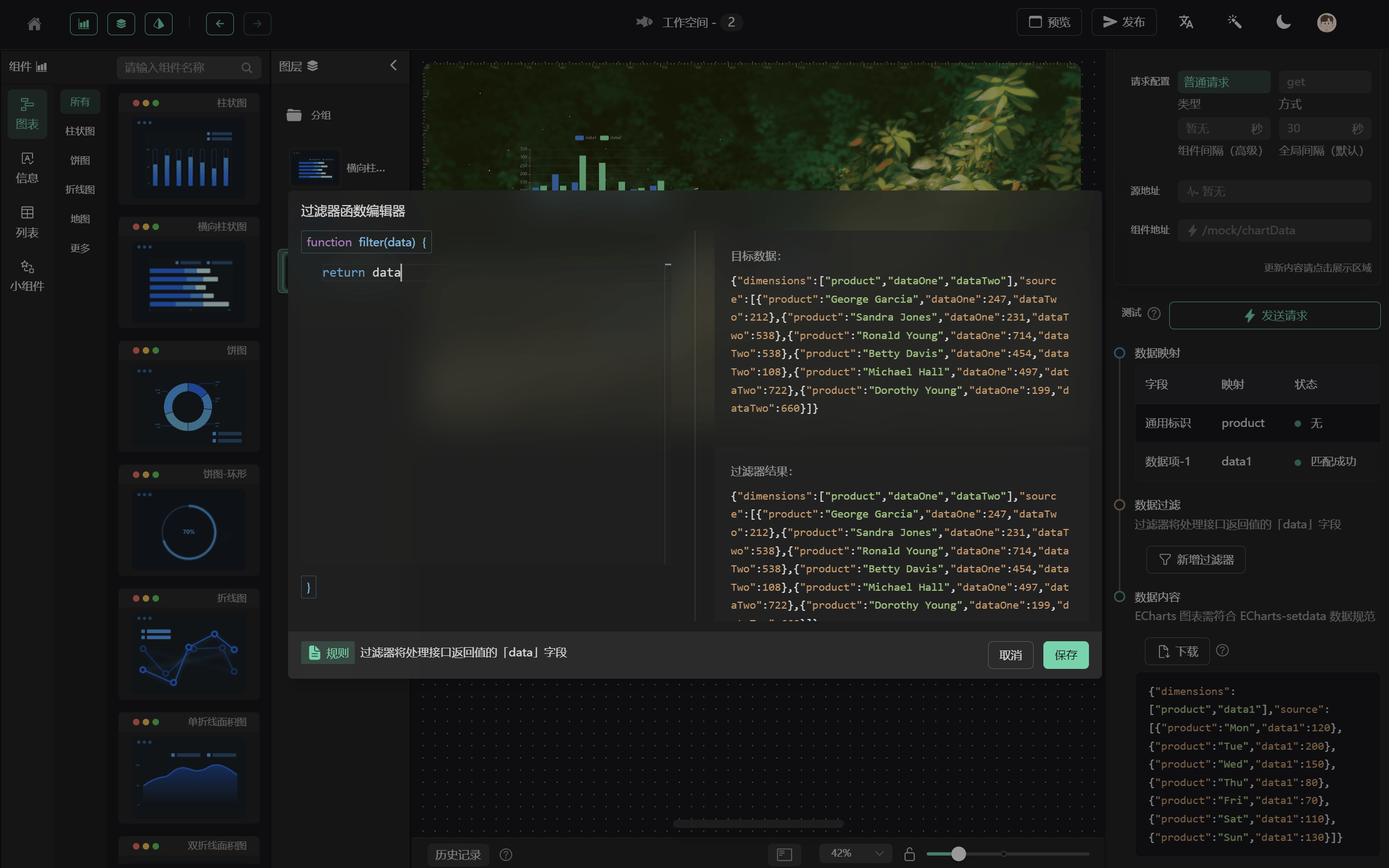
大屏数据可视化开源项目
一、DataGear —— 数据可视化项目 官网:DataGear - 开源免费的数据可视化分析平台 DataGear 是一款开源免费的数据可视化分析平台,数据可视化看板。 功能特性: 1、多种数据源,支持运行时接入任意提供 JDBC 驱动的数据库&#…...

面试经典150题:数组/字符串合集
新专栏,预计两个月写完吧,每天下班回来抽空做几道题。会把做题计划顺序记录下来,如果你有缘,刷到这个开篇序列,那就跟着文章去练题吧。初学者可以慢慢来 88. 合并两个有序数组 void merge(vector<int>& nums…...

Java源文件的执行过程
目录 1.JVM 2.字节码 3.Java源文件执行的过程 4.JIT(Just In Time Compilation) 5.AOT(Ahead Of Time Compilation) 6.AOT破坏Java动态性 7.编译型语言与解释型语言 8.Java-编译与解释并存的语言 9.Java和C的相同点与不同…...

10个ai算法常用库java版
今年ChatGPT 火了半年多,热度丝毫没有降下来。深度学习和 NLP 也重新回到了大家的视线中。有一些小伙伴问我,作为一名 Java 开发人员,如何入门人工智能,是时候拿出压箱底的私藏的学习AI的 Java 库来介绍给大家。 这些库和框架为机器学习、深度学习、自然语言处理等提供了广…...

怎么看服务器带宽大小 103.219.179.X
第一种,可以使用网站测速,这种方式比较便捷,但是由于网站测速是测试服务器发送数据包到他网站节点的一个速度情况,有时候节点问题或者服务器做了封包限制可能导致测试不准确的情况。 第二种,可以在IIS上架设一个大一点…...
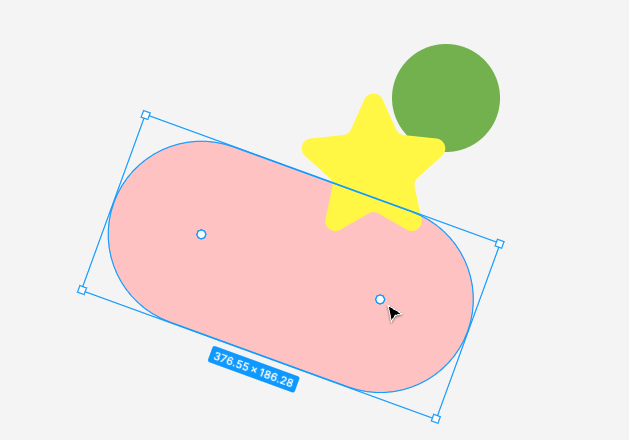
图形编辑器开发:最基础但却复杂的选择工具
大家好,我是前端西瓜哥。 对于一个图形设计软件,它最基础的工具是什么?选择工具。 但这个选择工具,却是相当的复杂。这次我来和各位,细说细说选择工具的一些弯弯道道。 我正在开发的图形设计工具的: http…...

apk签名-signapk.jar
如果做平台app开发,需要签platform签名,除了通过adroid.bp或者android.mk的方式使用AOSP整个大工程中签名外,还可以直接通过signapk.jar的方式进行签名,效率更高更快捷简便。 首先我们来回顾下AOSP平台签名的办法。 Android.mk 使…...
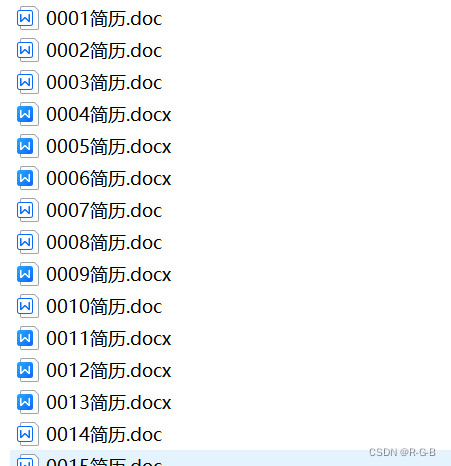
【100个高大尚求职简历】简历模板+修改教程+行业分类简历模板 (涵盖各种行业) (简历模板+编辑指导+修改教程)
文章目录 1 简历预览2 简历下载 很多人说自己明明投了很多公司的简历,但是都没有得到面试邀请的机会。自己工作履历挺好的,但是为什么投自己感兴趣公司的简历,都没有面试邀请的机会。反而是那些自己没有投递的公司,经常给自己打电…...

Nginx平滑升级版本或添加模块
文章目录 一、Nginx 平滑升级二、升级失败 回滚操作三、遇到问题 一、Nginx 平滑升级 一般有两种情况下需要升级 nginx,一种是确实要升级 nginx 的版本,另一种是要为 nginx 添加新的模块。 Nginx平滑升级其原理简单概括: (1&am…...
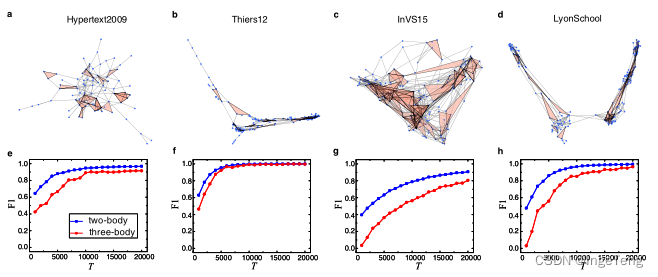
高阶复杂网络重建:从时间序列中重建高阶网络
论文链接:https://www.nature.com/articles/s41467-022-30706-9 一、为什么要研究高阶网络? 复杂网络跟我们生活息息相关,例如社交网络的信息传播,疾病的感染扩散和基因调控网络的相互作用等。越来越多的研究突破了传统网络中两…...
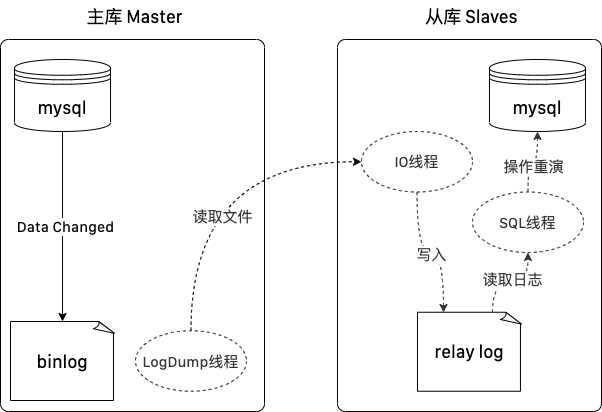
Day05 03-MySQL主从-主主原理与搭建详解
文章目录 第十六章 MySQL的系统架构(主从架构)16.1 MySQL集群架构的介绍16.1.1 主从架构介绍16.1.2 主从复制的原理 16.2 MySQL主从复制的实现16.2.1 环境说明16.2.2 主库配置16.2.3 从库配置16.2.4 主从复制测试 16.3 MySQL主主复制的实现16.3.1 主主复…...

STL之vector
目录 vector模拟实现一. vector的基本框架二. 常用方法及实现1.初始化和清理a. 默认构造函数b. 析构函数 2. 迭代器a. beginb. end 3.数据访问a. sizeb. capacityc. operator[]d. frontc. back 4.增删查改操作a. reserveb. resizec. insertd. push_backe. erasef. pop_back 5.构…...
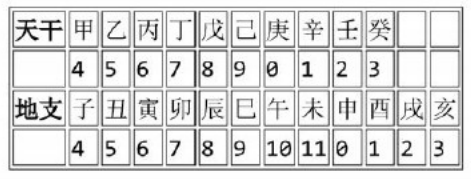
2020年CSP-J认证 CCF非专业级别软件能力认证第一轮真题-单项选择题解析
2020 CCF认证第一轮(CSP-J)真题 一、单项选择题 (共15题,每2分,共30分;每题有且有一个正确选项) 1、在内存储器中每个存储单元都被赋予一个唯一的序号,称为 A、下标 B、序号 C、地址 D、编号 答案:C…...

vscode Delete `␍⏎·····`
在公司拉取代码报错 Delete ␍⏎,首先问题的关键是换行导致,相信你看别的博客也知道为什么了,但是我使用别的博客的解决办法,没搞定,无论是配置 auto 还是命令行执行,都不行 下面介绍我的解决办法 我使用…...

读书笔记-《ON JAVA 中文版》-摘要16[第十六章 代码校验]
文章目录 第十六章 代码校验1. 测试1.1 单元测试1.2 JUnit1.3 测试覆盖率的幻觉 2. 前置条件2.1 断言(Assertions)2.2 Java 断言语法2.3 Guava 断言2.4 使用断言进行契约式设计2.4.1 检查指令2.4.2 前置条件2.4.3 后置条件2.4.4 不变性2.4.5 放松 DbC 检…...

SQL Server:打造高效数据管理系统的利器
使用SQL Server进行数据管理 简介 SQL Server是由Microsoft开发的一款关系型数据库管理系统,它可以用于存储和管理大量结构化数据。本篇博客将介绍如何使用SQL Server进行数据管理。 数据库连接 在开始使用SQL Server之前,需要先建立与数据库的连接。…...

代码随想录二刷day20 | 二叉树之 654.最大二叉树 617.合并二叉树 700.二叉搜索树中的搜索 98.验证二叉搜索树
day20 654.最大二叉树617.合并二叉树700.二叉搜索树中的搜索98.验证二叉搜索树 654.最大二叉树 题目链接 解题思路: 本题属于构造二叉树,需要使用前序遍历,因为先构造中间节点,然后递归构造左子树和右子树。 确定递归函数的参数…...
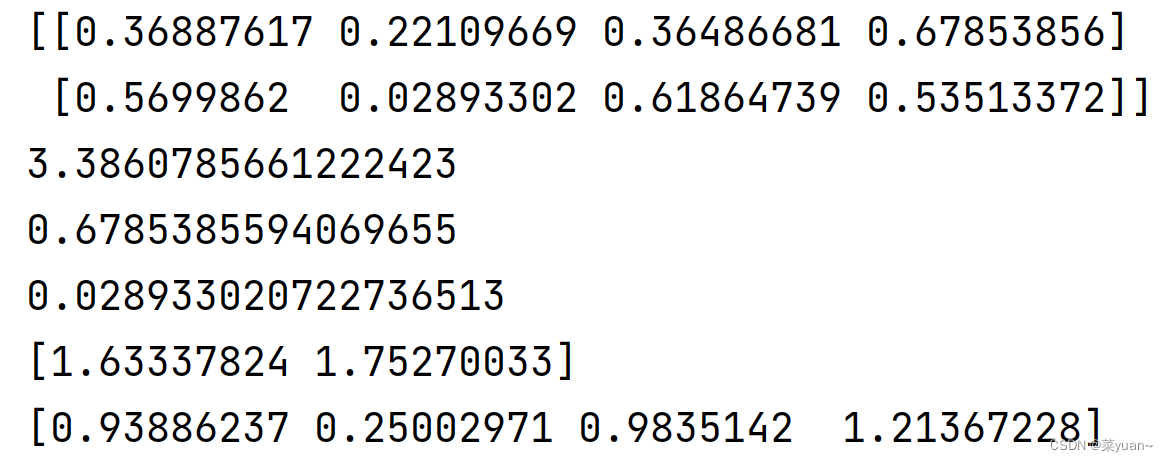
python基础知识(十三):numpy库的基本用法
目录 1. numpy的介绍2. numpy库产生矩阵2.1 numpy将列表转换成矩阵2.2 numpy创建矩阵 3. numpy的基础运算4. numpy的基础运算25. 索引 1. numpy的介绍 numpy库是numpy是python中基于数组对象的科学计算库。 2. numpy库产生矩阵 2.1 numpy将列表转换成矩阵 import numpy as …...
线程函数 tp_recv_thread() 源码分析)
【SA8295P 源码分析】16 - TouchScreen Panel (TP)线程函数 tp_recv_thread() 源码分析
【【SA8295P 源码分析】16 - TouchScreen Panel (TP)线程函数 tp_recv_thread 源码分析 一、TP 线程函数:tp_recv_thread()二、处理&上报 坐标数据 cypress_read_touch_data()系列文章汇总见:《【SA8295P 源码分析】00 - 系列文章链接汇总》 本文链接:《【SA8295P 源码…...
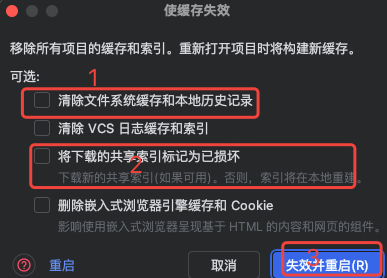
idea大量爆红问题解决
问题描述 在学习和工作中,idea是程序员不可缺少的一个工具,但是突然在有些时候就会出现大量爆红的问题,发现无法跳转,无论是关机重启或者是替换root都无法解决 就是如上所展示的问题,但是程序依然可以启动。 问题解决…...
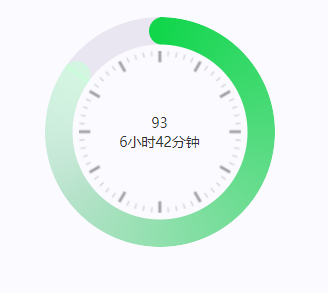
css实现圆环展示百分比,根据值动态展示所占比例
代码如下 <view class""><view class"circle-chart"><view v-if"!!num" class"pie-item" :style"{background: conic-gradient(var(--one-color) 0%,#E9E6F1 ${num}%),}"></view><view v-else …...

HTML前端开发:JavaScript 常用事件详解
作为前端开发的核心,JavaScript 事件是用户与网页交互的基础。以下是常见事件的详细说明和用法示例: 1. onclick - 点击事件 当元素被单击时触发(左键点击) button.onclick function() {alert("按钮被点击了!&…...

QT: `long long` 类型转换为 `QString` 2025.6.5
在 Qt 中,将 long long 类型转换为 QString 可以通过以下两种常用方法实现: 方法 1:使用 QString::number() 直接调用 QString 的静态方法 number(),将数值转换为字符串: long long value 1234567890123456789LL; …...
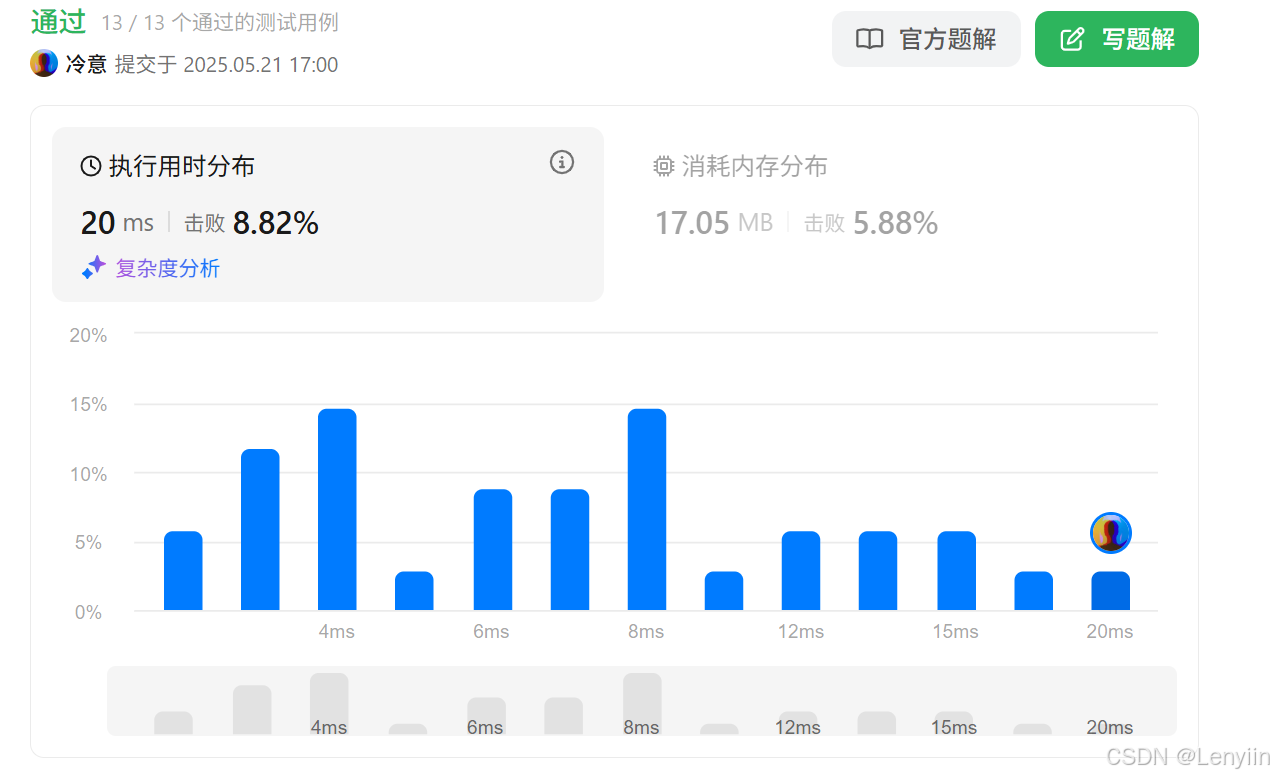
第 86 场周赛:矩阵中的幻方、钥匙和房间、将数组拆分成斐波那契序列、猜猜这个单词
Q1、[中等] 矩阵中的幻方 1、题目描述 3 x 3 的幻方是一个填充有 从 1 到 9 的不同数字的 3 x 3 矩阵,其中每行,每列以及两条对角线上的各数之和都相等。 给定一个由整数组成的row x col 的 grid,其中有多少个 3 3 的 “幻方” 子矩阵&am…...

安宝特案例丨Vuzix AR智能眼镜集成专业软件,助力卢森堡医院药房转型,赢得辉瑞创新奖
在Vuzix M400 AR智能眼镜的助力下,卢森堡罗伯特舒曼医院(the Robert Schuman Hospitals, HRS)凭借在无菌制剂生产流程中引入增强现实技术(AR)创新项目,荣获了2024年6月7日由卢森堡医院药剂师协会࿰…...
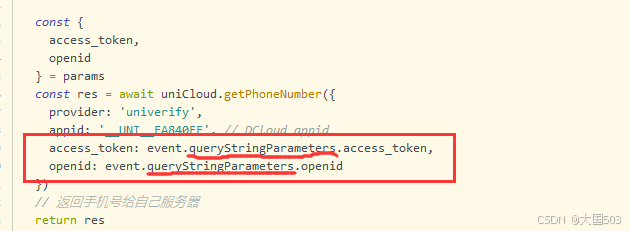
uniapp手机号一键登录保姆级教程(包含前端和后端)
目录 前置条件创建uniapp项目并关联uniClound云空间开启一键登录模块并开通一键登录服务编写云函数并上传部署获取手机号流程(第一种) 前端直接调用云函数获取手机号(第三种)后台调用云函数获取手机号 错误码常见问题 前置条件 手机安装有sim卡手机开启…...
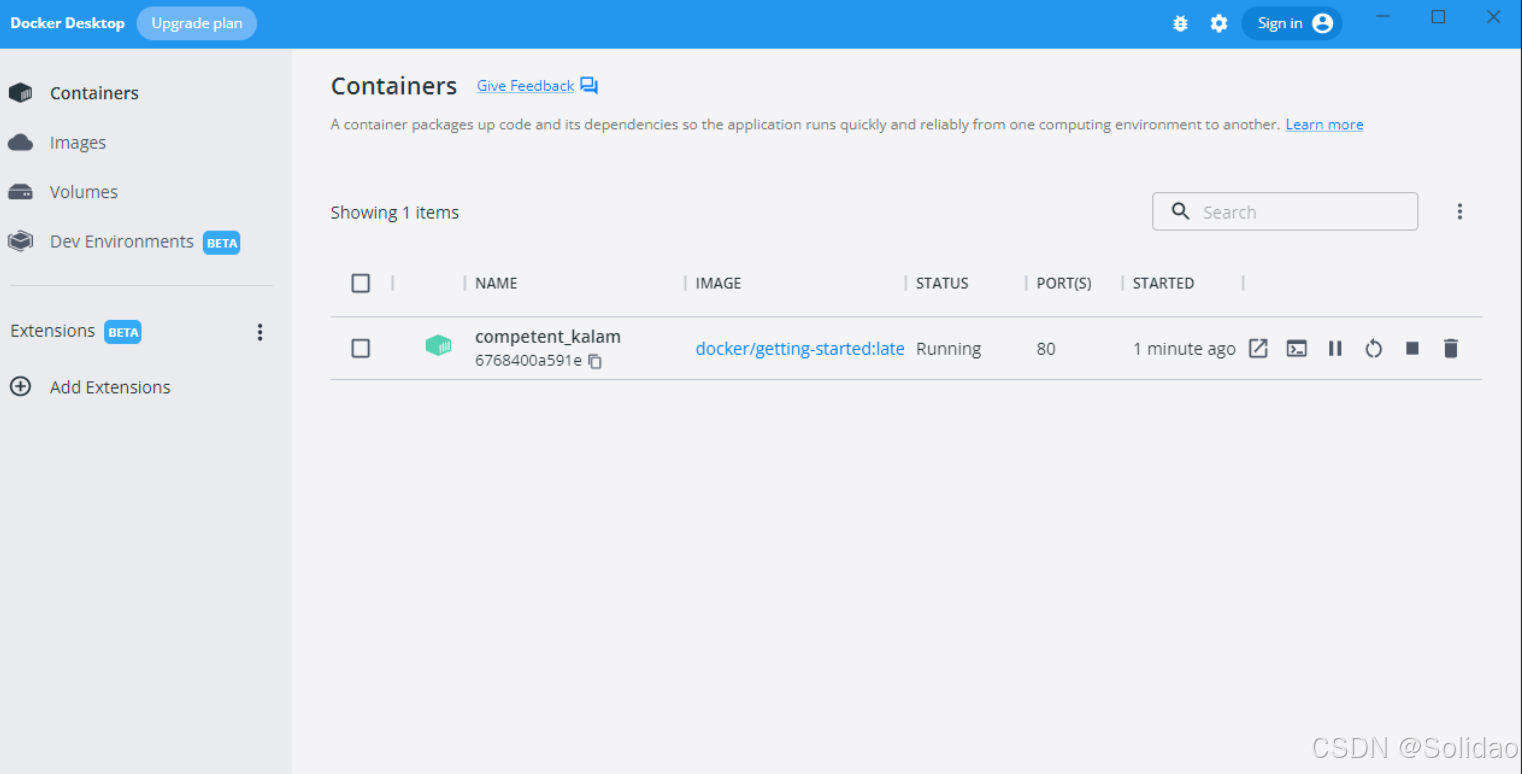
从物理机到云原生:全面解析计算虚拟化技术的演进与应用
前言:我的虚拟化技术探索之旅 我最早接触"虚拟机"的概念是从Java开始的——JVM(Java Virtual Machine)让"一次编写,到处运行"成为可能。这个软件层面的虚拟化让我着迷,但直到后来接触VMware和Doc…...
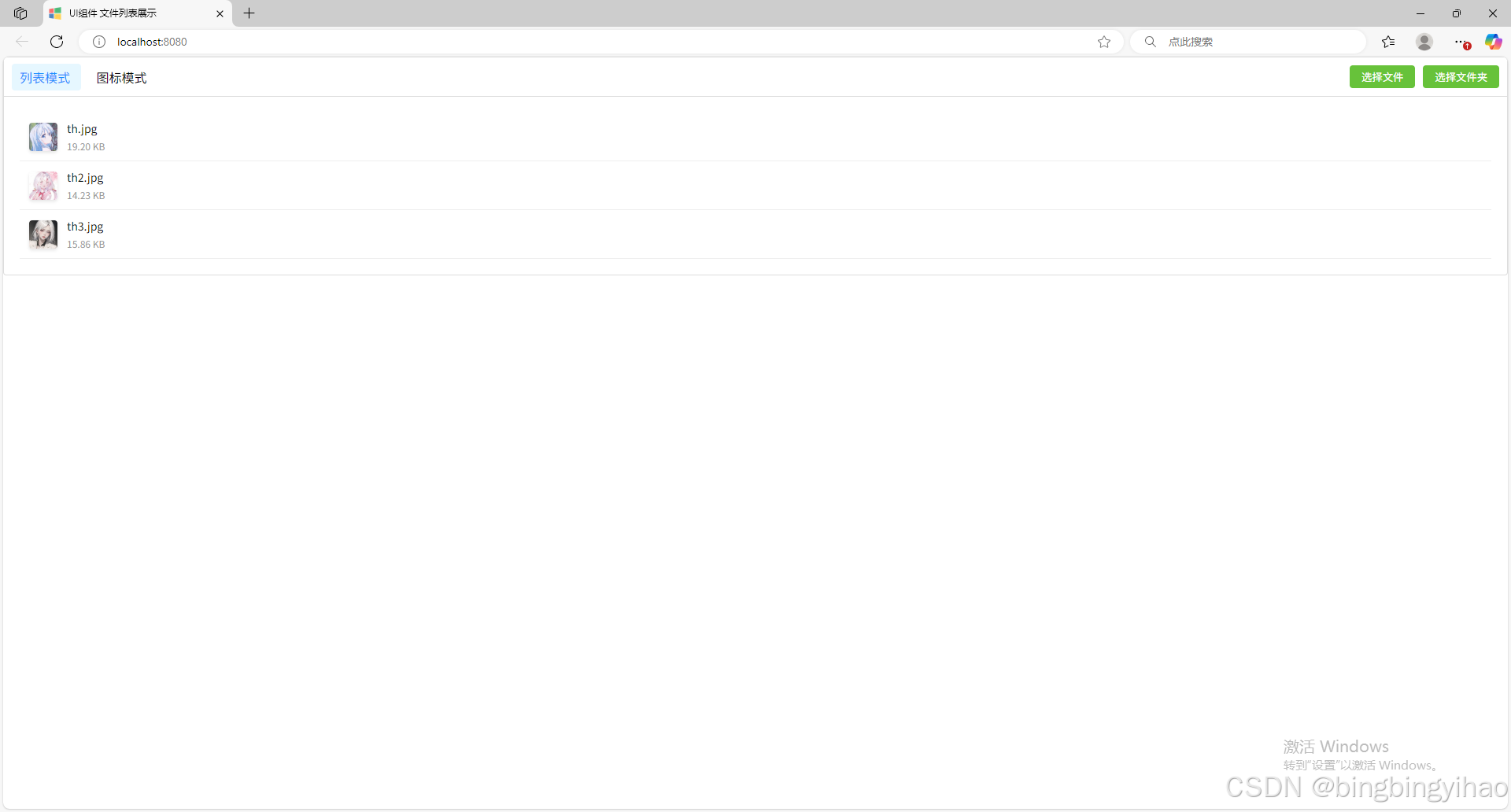
ui框架-文件列表展示
ui框架-文件列表展示 介绍 UI框架的文件列表展示组件,可以展示文件夹,支持列表展示和图标展示模式。组件提供了丰富的功能和可配置选项,适用于文件管理、文件上传等场景。 功能特性 支持列表模式和网格模式的切换展示支持文件和文件夹的层…...

[USACO23FEB] Bakery S
题目描述 Bessie 开了一家面包店! 在她的面包店里,Bessie 有一个烤箱,可以在 t C t_C tC 的时间内生产一块饼干或在 t M t_M tM 单位时间内生产一块松糕。 ( 1 ≤ t C , t M ≤ 10 9 ) (1 \le t_C,t_M \le 10^9) (1≤tC,tM≤109)。由于空间…...
